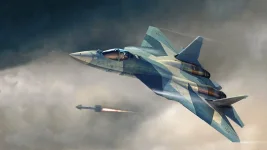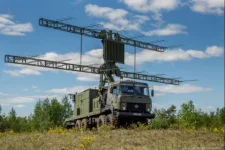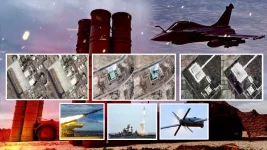- Views: 3K
- Replies: 23

Defence experts are closely monitoring Pakistan's potential acquisition of the Chinese J-35A fifth-generation stealth fighter, a move that could significantly shift the balance of power in South Asia.
This development has fueled speculation that the United States might respond by offering India the F-35A stealth fighter, albeit with certain conditions, as a means to counter Chinese influence and bolster India's defence capabilities. Such a move would mark a strategic shift in U.S.-India defence relations and further intensify the competition for air superiority in the region.
The J-35A, a carrier-capable stealth fighter developed by China, boasts advanced avionics, low-observability features, and the ability to deploy a wide range of modern weaponry. Should Pakistan acquire this aircraft, it could significantly enhance its aerial warfare capabilities and potentially tilt the balance of power in the region.
The close military ties between China and Pakistan, often referred to as an "all-weather partnership," make this acquisition a distinct possibility. For India, the introduction of the J-35A into Pakistan's arsenal would necessitate a robust countermeasure, particularly as China itself operates a growing fleet of fifth-generation fighters like the J-20.
The Pentagon might view this situation as an opportunity to strengthen its strategic partnership with India and contain China's growing influence in South Asia. Offering India the F-35A, widely considered one of the most advanced stealth fighters globally, could provide India with a decisive technological advantage.
However, there are potential obstacles to overcome. India's existing S-400 air defence systems, procured from Russia, could complicate the deal. The U.S. has strict regulations regarding the deployment of the F-35 near Russian systems due to concerns about potential data leakage and compromise of the F-35's stealth capabilities.
Experts suggest that the U.S. could impose stringent conditions for the sale of the F-35A to India to mitigate these risks. These conditions might include ensuring that F-35 operations are geographically isolated from S-400 batteries and implementing measures for greater oversight and interoperability with U.S. forces to protect sensitive technologies.
While the F-35A will represent a significant upgrade for the Indian Air Force, India must carefully weigh the potential implications. The F-35A is known for its high acquisition and maintenance costs, and opting for this platform could divert resources and focus from India's indigenous fighter jet programs, such as the AMCA (Advanced Medium Combat Aircraft). Furthermore, accepting the F-35A could potentially strain India's long-standing defence ties with Russia.
The potential sale of J-35A fighters to Pakistan and a subsequent U.S. offer of the F-35A to India would undoubtedly escalate the arms race in South Asia. While this presents challenges, it also offers India an opportunity to bolster its defence capabilities, enhance its deterrence posture, and solidify its position as a key U.S. defence partner in the Indo-Pacific region.




